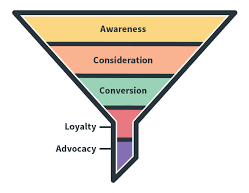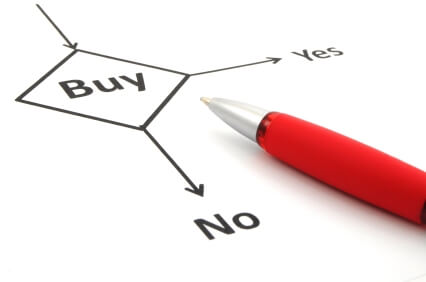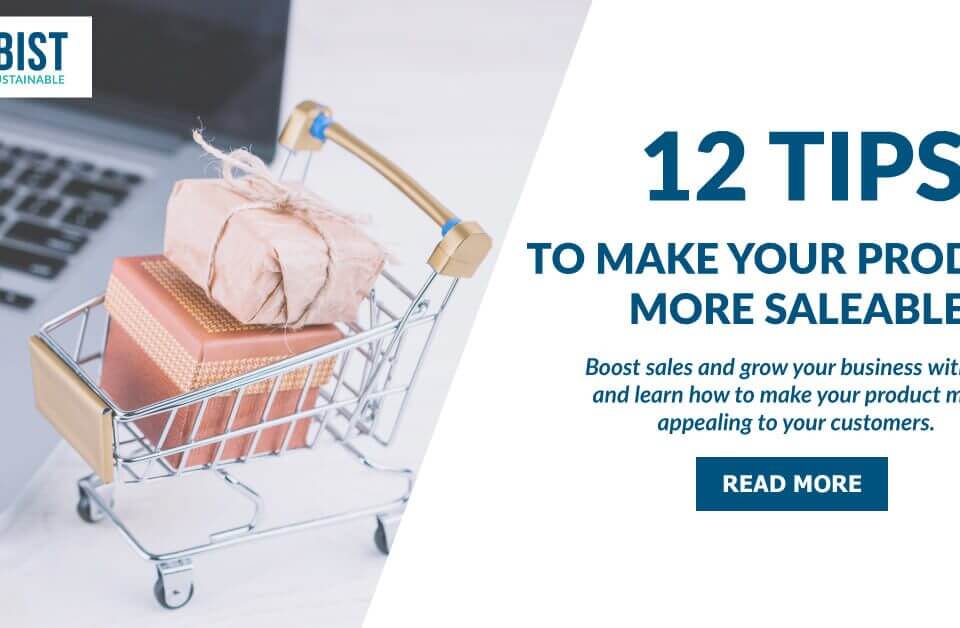How to Create a Marketing Funnel that Generates Sales (Templates Included)

Guides for Growth Hacking: 9 Tips for Entrepreneurs
April 17, 2016
How to Use Scarcity on Your Landing Page to Skyrocket Conversions
August 13, 2016How to Create a Marketing Funnel that Generates Sales (Templates Included)

What is a “marketing funnel”? No, it’s not what you use for cooking.
We’re talking about the kind of funnel that you absolutely must get right if you want your business’ sales process to run as efficiently as possible.
Basically, your marketing funnel is made up of several stages through which would-be customers move from first awareness of your brand to post-sale evangelism. It’s the process of converting a visitor or browser into a paying customer.
Think of pouring rice through a funnel: a lot goes into the top but only a trickle comes out the bottom. That’s how leads pour into a funnel: a lot of interested people go into it, but a much smaller number of people come out the other end — with your product in their hand.
Some business owners are moving away from the term “marketing funnel” because they think it’s too mechanical or simplistic to describe the lead nurturing sequence by which customers move from awareness to purchase. I think it’s still a useful way to describe a complex process and it’s a good visual to imagine the entire process from start to finish.
Let’s define this idea further by looking at two examples:
Example 1
Norman Newbie owns a software company with ten salespeople and one product. He’s not a very savvy marketer, so his sales process currently involves handing his salespeople lists of leads that he purchased online and having them “dial for dollars.” His salespeople frequently get frustrated since his leads aren’t always good quality. Because they’re usually calling on people who A) aren’t interested in his services and B) are not a good fit for them, the salespeople close less than 1% of the prospects they initially reach out to.
Example 2
Molly Marketer has a similarly-sized company, but instead of taking Norman’s traditional outbound marketing approach, she’s created a marketing funnel that helps her three salespeople close more sales with less effort.
Molly started by building a series of attention-grabbing content marketing pieces that are tied to landing pages on her website. Potential customers can engage with her content (blog posts, infographics, videos) and learn about her company and its services without a cold call from a salesperson.
When these would-be buyers become interested enough in her products, they request an online demonstration by filling out the form on her landing pages. These requests are routed directly to her salespeople, who, because they’re dealing with warm leads, close roughly 50% of the customers to whom they demo. Molly’s company closes more sales than Norman’s, with fewer salespeople and no time spent on cold calling.
Obviously, these are simplified examples, and most businesses will fall somewhere in the middle of this “0 to 60” spectrum. Even if you’ve never heard the phrase “marketing funnel” before, make no mistake about it: you have one.
Whether you’re an old hand looking for fresh ideas on optimizing your current funnel or a newbie wanting to learn how to make an effective marketing funnel, you’ve come to the right place!
Stages in the Buying Process
No matter what kind of purchase we’re making or how much we intend to spend, all of us follow a relatively similar path when it comes to deciding what to buy. This buying process was first introduced by John Dewey in 1910, but even now — more than 100 years later — it’s still the foundation of understanding buyer behavior and marketing funnel creation.
Here are the sales funnel stages:

Stage #1 – Problem/Need Recognition
Understandably, if a person doesn’t recognize that she has a need that must be filled, she’s not going to make a purchase! That said, these needs can range from obvious, easily-solved problems to issues without clear solutions.
Suppose your furnace goes out in the middle of winter. Your problem is obvious: you need a new furnace. And the solution is easy — you need to call HVAC providers in your areas for quotes. But say you need a new car. Should you look for an SUV, a compact car or a mid-size sedan? Even vaguer still, if you’re frustrated with how much your accountant is charging you to do your business’ taxes, you might not even be familiar with all the different solutions, like cloud-based accounting services.
Stage #2 – Information Search
Recognizing a problem or need is the step that triggers a search for more information. Depending on the need at hand, the information search can take a number of different forms, including:
– Reading reviews online
– Asking friends for recommendations
– Checking the newspaper for coupons
– Visiting a store for a hands-on demonstration
– Searching Google for options
The strategies used to gather information tend to vary based on the size and scope of the purchase. Recognizing that you’re hungry, for example, might result in a quick Yelp search for restaurants in your area. Deciding which provider to use to place a new in-ground pool at your home might involve calling around, reading company reviews online, visiting showrooms, and talking with salespeople.
Stage #3 – Evaluation of Alternatives
Following your information search — or, sometimes running concurrently with this process — you’ll start comparing the alternatives that your research has uncovered. Again, the time spent in this stage will vary based on the type of purchase being contemplated. Choosing a restaurant might be as simple as deciding, “Well, I feel like Chinese food, not Mexican, tonight.”
But say you’re evaluating marketing automation programs to help improve the sales funnel you’re creating. Because these programs can require investments of $1,500 a month, you’re likely to undergo a much more careful and thorough evaluation process. You might request free trials of the different systems you’re considering, have online demonstrations with each company’s representatives or view training videos to get a feel for how each system will perform.
Stage #4 – Purchase Decision
The purchase decision is the natural conclusion of the preceding three stages. You determine that you have a problem, investigate your options, decide which one is best for you, and then pull the trigger. However, businesses need to be aware that there are two things that can disrupt this stage: negative feedback from fellow customers and the prospect’s motivation to accept this feedback.
Let’s suppose that you’re big into cycling and you’ve decided to purchase Trek’s latest Emonda line road bike. You read a few less-than-positive reviews online, but brushed them off on the understanding that all internet comments should be taken with a grain of salt. But then a fellow cyclist whom you respect tells you that he didn’t love the bike. Where you were less inclined to let anonymous reviewers’ feedback affect your buying decision, you are much more motivated by the advice of somebody you know personally.
Stage #5 – Post-Purchase Behavior
Finally, don’t think that the sales process is done just because a purchase decision has been made. What happens after the sale has been completed is just as important as what went into bringing about the sale in the first place!
If your new customers are greeted by a thoughtful onboarding process, personal attention, and all the resources they need to use your product successfully, they’re more likely to confirm to themselves that they made the right choice. And when they’re confident, they’re more likely to pass on their satisfaction to others in the form of recommendations and product endorsements. If, on the other hand, your new customers experience disappointment after their purchase, they’re more likely to request refunds, write negative reviews, and recommend that others in their social circles purchase from your competitors.
Although most people enter the funnel at the top — the “problem/need” recognition section — not everyone does. Some will enter at subsequent stages, but the process remains the same no matter which stage someone enters the sales funnel.
Creating Content for Your Marketing Funnel
Now that you know how people make decisions, you can use this knowledge of the buying process to make a marketing funnel by creating content that will appeal to people at every stage. Take a look at the following sales funnel template from TechValidate to see how this translates:
funnel
As you can see, each color-coded piece of the funnel pictured above roughly corresponds to stages 2-4 in the buying process. The widest tier at the top of the funnel represents “awareness,” the point at which potential customers are beginning their information search. The second tier is “consideration,” roughly corresponding to the evaluation of alternatives described in the purchase process above. And finally, the third tier, “decision,” is self-explanatory.
As a note, stages one and five have been left out of this model. Though all companies should have a plan for addressing post-purchase follow-up, it’s up to you to determine whether or not it’s worth your company’s time to try to reach buyers in the first stage of the process. It can be difficult to convince people that they have a problem if they haven’t already felt it themselves, but if you’re selling a new type of product that meets a previously unrealized need, you might want to focus your energy on this area.
For each stage of the funnel, you’ll need to answer the following questions:
- How will customers at this stage find me?
- What kind of information do I need to provide to help them move from one stage to the next?
- How will I know if they have moved from one stage to another?The image above gives some hints as to how you might answer some of these questions, and you’ll find that some are easier to answer than others. To continue with our earlier example, let’s explore how Norman could answer each of these questions in order to create the foundation of his marketing funnel:Stage 1 – Problem/Need Recognition
Because Norman sells a high-dollar software product that meets a need that most businesses are familiar with, he decides that it’s easier to focus on attracting and converting customers who already know that they need his product, rather than trying to create the need in the first place. If he was a startup or a company with a new idea, he might choose to invest more of his time and energy here.
Stage 2 – Information Search
How will customers at this stage find me?
Given the broad appeal of his product and its high-dollar nature, Norman decides that the following strategies will be most appropriate:
– Paid advertising on Google AdWords that lead visitors to a landing page with an opt-in form requesting a free online demonstration
– Guest blog posts on industry websites that provide viewers with unbiased information on what to look for when buying his type of software
– Optimizing his website for keywords that indicate an information search in progress in order to capture organic search traffic
– Social media posts that educate viewers on a wide variety of industry issues
What kind of information do customers at this stage need?
Content that confirms that the need they’ve perceived is valid and should be remedied (for example, blog posts that appeal to the visitor’s frustrations with emotional descriptions of the problem and how the product solves it—“Why X is a Problem and What You Should Do About It”)
Content that describes the attributes of the product to encourage viewers to include in their future evaluation of alternatives (for example, blog posts with titles like “Getting to Know Product X”)
Content that introduces the company and intrigues the potential customer enough to move to the next stage of the buying process (for example, Facebook posts on “Behind the Scenes at Norman’s Company”)
How will I know if customers have moved on to the next stage?
Norman will know when customers have moved on to the “Evaluation of Alternatives” stage when they request a free online demonstration, indicating that they are interested enough in the product to compare it against others.
Stage 3 – Evaluation of Alternatives
How will customers at this stage find me?
Most prospects will enter this stage after identifying Norman’s company as a possible alternative and completing the information search process described in Stage 2. However, some customers might be introduced to his brand after completing Stage 2 with his competitors, as in the case of an industry blog running a comparison chart of the different competitors in his space.
As a result, Norman decides that it’s prudent to set up Google Alerts for his competitors’ names. Whenever they appear online, he makes it a point to try to get his company mentioned as well by reaching out to publishers, leaving comments, and responding to questions he sees about his competitors.
What kind of information do customers need at this stage?
– What differentiates Norman’s product from his competitors’ products? Instead of relying on external sites, Norman could create his own product comparison chart showing how his product is different from others.
– Have other buyers been successful with Norman’s product? Case studies of past customer successes can be extremely helpful in terms of moving customers from the evaluation stage to the purchase decision.
– Why should they purchase from Norman? To meet this need, Norman might publish a white paper based on primary research he’s conducted that establishes himself as an industry authority (or, better yet, he might place this behind an opt-in form that causes visitors to take the psychologically-compelling step of engaging further with his brand).
How will I know if customers have moved on to the next stage?
Visitors who move on to the next stage are those that make a purchase, so any indication that the buying process has begun means success — from verbal confirmation of a deal’s acceptance to the receipt of a formal contract. However, if Norman uses an online shopping cart system, he might also find it useful to track abandonment rates, as reaching out to these customers could help reveal reasons visitors aren’t progressing to the next stage or provide salespeople with leads that can be easily closed with a single outreach phone call.
Stage 4 – Purchase Decision
How will customers at this stage find me?
Customers at this stage will have already found Norman’s company by progressing through stages 1-3. There is no extra outreach Norman needs to do at this point, as it is exceedingly rare for customers to purchase without conducting any type of information search or comparison of alternatives.
What kind of information do customers at this stage need?
Since Norman is selling a high-dollar product, he needs to do two things: help prospects be comfortable with the purchasing process and make the purchase process as easy as possible.
– To help make customers comfortable, he decides to create a few blog posts on what happens after the purchase is completed to ease potential worries about investing with his company (for example, “10 Ways Norman’s Company Simplifies Software Onboarding”).
– To minimize confusion, he adds information to his checkout pages in order to make it as obvious as possible what prospects should do next in order to purchase his solution.
How will I know if customers have moved on to the next stage?
Customers will move on to Stage 5 when the sale is complete. Although we won’t detail it here, Norman should brainstorm the kinds of information these customers will need, as well as how he’ll provide it as part of a cohesive onboarding process. Though he doesn’t need to worry about customers finding him at this stage or moving on to the next one, it’s still important to meet their needs so that they walk away feeling good about their purchase decisions!
After completing this brainstorming process, Norman creates an overall list of all the different content pieces he’ll need to create and deploy, including:
– Google AdWords ad copy
– Landing pages with lead generation forms for customers requesting online demonstrations
– Guest blog posts
– On-site page and blog content written for SEO keywords
– Blog post: Why X Is a Problem and What You Should Do About It
– Blog post: Getting to Know Product X
– Blog post: 10 Ways Norman’s Company Simplifies Software Onboarding
– Social media posts: Behind the Scenes at Norman’s Company
– Product comparison chart
– Case studies from successful customers
– White paper
– New checkout page content
Since this is a significant amount of content, Norman can choose to roll it out over time, enlist other employees in the creation process or outsource some of it to freelance workers.
Another Way to Remember Content Creation Stages
There’s another way to remember stages of the sales funnel and match it to content creation — with the acronym AIDA:
Attention: This is similar to the problem/need recognition stage. Customers experience a problem, but must recognize the problem. You create content to draw attention to the need.
Interest: Interest and information both start with the letter “I.” This is the stage at which customers are actively seeking, or interested in, information to help them solve their problem. As they move through the sales funnel from recognizing or drawing attention to the problem, their interest is sparked in a solution. They need information to move into the next phase.
Desire: Customers have moved from attention or recognition of the problem through information-gathering and interest. Now they have a desire for a solution. Customers evaluate alternatives and your job, through content creation, is to spark a desire for your solution. You must convince customers, as they examine various solutions to their problem, that your solution is the right one for them.
Action: Now it is time for customers to make the purchase decision, or to take action. Make it easy for them to say “yes” to taking action. Have a strong call to action in your copy, and a simple path to follow to complete the sale. The easier you make it for people to take action, the more sales you’ll generate through your sales funnel.
Make no mistake, creating a sales and marketing funnel using the process described above is no easy feat. This isn’t a project you’re going to complete in one afternoon—it’s a pursuit that you’ll want to actively address as long as your company is in business. It’s not a simple undertaking, but it’s one of the few opportunities you have to drive significant improvements in your efficiency and effectiveness when closing deals.
Have you invested in creating a marketing funnel? Share your tips, tricks and recommendations in the comments section below!
Source : Single Grain



